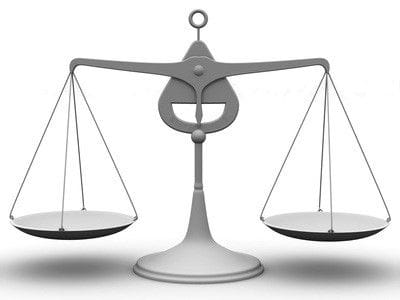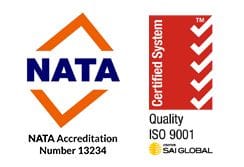Posted by Richard Forster
on 17 April 2018
 Considering that the term 'reasonably practicable' seems to be at the pointy end of most health and safety legislation used in prosecutions (e.g. failure to provide, so far as is reasonably practicable) there seems to be a surprising lack of understanding as to what this phrase means. Granted, it is not a phrase that is used in common conversation, however doing what is reasonably practicable in the circumstances may be the difference between life and death.
Considering that the term 'reasonably practicable' seems to be at the pointy end of most health and safety legislation used in prosecutions (e.g. failure to provide, so far as is reasonably practicable) there seems to be a surprising lack of understanding as to what this phrase means. Granted, it is not a phrase that is used in common conversation, however doing what is reasonably practicable in the circumstances may be the difference between life and death.
Regardless of what Health and Safety legislation your organisation operates under there is now an impressive library of documents, issued by the various health and safety regulators, that explain what this most important term means for the relevant duty holders. The concept of what is 'reasonably practicable in the circumstances' needs to be embedded in health and safety documentation, mindset and training.
The term 'reasonably practicable' in relation to a duty to ensure health and safety means that which is, or was at a particular time, reasonably able to be done to ensure health and safety, considering all relevant matters including:
- The likelihood of the hazard or the risk concerned occurring (or eventuating);
- The degree of harm that might result from the hazard or the risk;
- What the person concerned knows, or ought reasonably to know, about the hazard or risk, and about the ways of eliminating or minimising/reducing the risk;
- The availability and suitability of ways to eliminate or minimise/reduce the risk; and
- The cost associated with available ways of eliminating or minimising/reducing the risk.
Note: where Work Health and Safety (WHS) legislation applies, there is a specific requirement that cost is considered as the last of the above factors and further consideration is given as to whether the cost is grossly disproportionate to the risk.
A duty holder (such as an employer under OHS legislation or a person conducting a business or undertaking [PCBU] under WHS legislation) must first consider what can be done - that is, what is possible in the circumstances for ensuring health and safety. They must then consider whether it is reasonable in the circumstances to do all that is possible with a clear presumption in favour of safety.
It is important to examine the above five points individually to assist with clarity.
1. The likelihood of the hazard or the risk concerned occurring (or eventuating).
Here, the greater the likelihood of a risk occurring, the greater the significance this will play when weighing up all matters and determining what is reasonably practicable. If harm is more likely to occur, then it may be reasonable to expect more to be done to eliminate or minimise/reduce the risk. Consideration is also required of the frequency of an activity as the more a worker is exposed to a hazard, the more likely they are to suffer harm from it.
2. The degree of harm that might result from the hazard or the risk.
Here, the greater the degree of harm that could result from the hazard or risk, the more significant this factor will be when weighing up all matters to be taken into account and identifying what is reasonably practicable in the circumstances. Clearly, more would be expected of a duty-holder to eliminate or minimise/reduce the risk of death or serious injury than a lesser harm.
3. What the person concerned knows, or ought reasonably to know, about the hazard or risk, and about the ways of eliminating or minimising/reducing the risk.
The knowledge about a hazard or risk, and any ways of eliminating or minimising/reducing the hazard or risk, will be what the duty-holder knows, and what a reasonable person in the duty-holder's position (e.g. a person in the same industry) would reasonably be expected to know. This is commonly referred to as the state of knowledge.
The courts have consistently stated a duty holder must consider all reasonably foreseeable hazards and risks when identifying what is reasonably practicable. This involves the formal processes of hazard identification i.e. Find within the available state of knowledge, hazards before they cause an incident, injury, illness or disease. A duty-holder may have to carry out investigations or analyses. These investigations and analyses are generally known as the process of risk assessment.
A WorkSafe Victoria position on 'reasonably practicable' lists the following for consideration by the relevant duty holder.
-
The potential failure of plant, equipment, systems of work or risk control measures;
-
Human inadvertence or error, misuse, spontaneity, panic, fatigue or stress to the extent that they affect health and safety matters relevant to the duty; and
-
The potential interaction between multiple hazards that may, together, cause different risks.
Once risk assessed, a duty-holder should know, within the available state of knowledge, about the ways of eliminating or minimising/reducing hazards and risks using the hierarchy of risk control (note that this topic is also covered in this issue of Safety Chat). They should know about the ways of controlling hazards and risks set out in the following:
-
Regulations made under the Act;
-
Other laws that relate to the control of hazards and risks;
-
Relevant Codes of Practice/ Compliance Codes and publications issued by the regulator or from other sources;
-
Relevant reputable technical standards, such as those published by Standards Australia;
-
Material published by other Australian health and safety regulators;
-
Industry practice and publications; and
-
Relevant published scientific and technical literature.
The state of knowledge may provide a number of different ways to control a hazard or risk, and these should be considered when determining what is reasonably practicable in the circumstances.
4.The availability and suitability of ways to eliminate or minimise/reducing the risk
This requires consideration of not only what is available, but also what is suitable for the elimination or minimisation/reduction of risk. A risk control that may be effective in some circumstances or environments may not be effective or suitable in others. For example; the workplace layout, skills of relevant workers, or the way in which the work is done.
Equipment to eliminate or minimise/reduce a hazard or risk is regarded as being available if it is provided on the open market, or if it is feasible to manufacture it.
A work process (or change to a work process) to eliminate or minimise/reduce a hazard or risk is regarded as being available if it is feasible to implement.
5. The cost associated with available ways of eliminating or minimising/reducing the risk
Although the cost of eliminating or minimising/reducing risk is relevant in determining what is reasonably practicable, there is to be a clear presumption in favour of safety ahead of cost.
In WHS legislation and implicit in OHS legislation is the concept that the cost of eliminating or minimising/reducing risk must only be taken into account after identifying the extent of the risk (the likelihood and degree of harm) and the available ways of eliminating or minimising/reducing the risk.
The costs of implementing a control may include costs of purchase, installation, maintenance and operation of the control measure and any impact on productivity as a result of the introduction of the control measure.
A calculation of the costs of implementing a control measure must take into account any savings from fewer incidents, injuries and illnesses, potentially improved productivity and reduced staff turnover.
A final point to consider is that the state of knowledge will evolve, for example new health and safety legislation or accompanying codes or new technology making improvements by design. That is why health and safety is never done.

&geometry(365x79))
 Considering that the term 'reasonably practicable' seems to be at the pointy end of most health and safety legislation used in prosecutions (e.g. failure to provide, so far as is reasonably practicable) there seems to be a surprising lack of understanding as to what this phrase means. Granted, it is not a phrase that is used in common conversation, however doing what is reasonably practicable in the circumstances may be the difference between life and death.
Considering that the term 'reasonably practicable' seems to be at the pointy end of most health and safety legislation used in prosecutions (e.g. failure to provide, so far as is reasonably practicable) there seems to be a surprising lack of understanding as to what this phrase means. Granted, it is not a phrase that is used in common conversation, however doing what is reasonably practicable in the circumstances may be the difference between life and death.)



